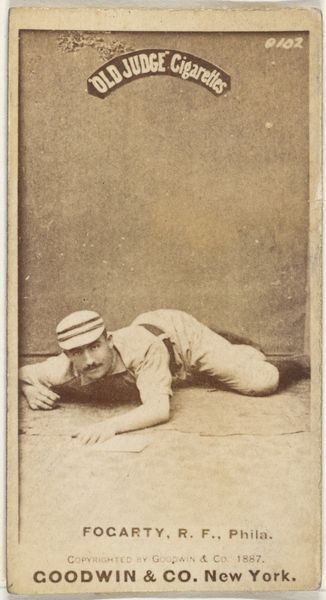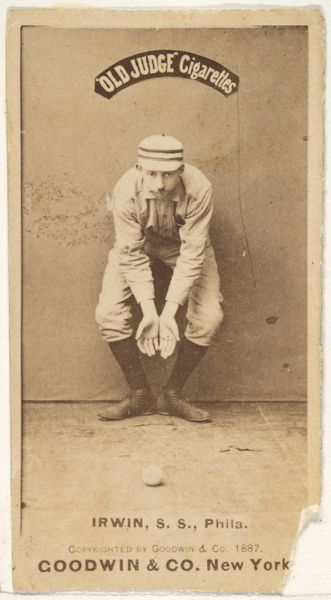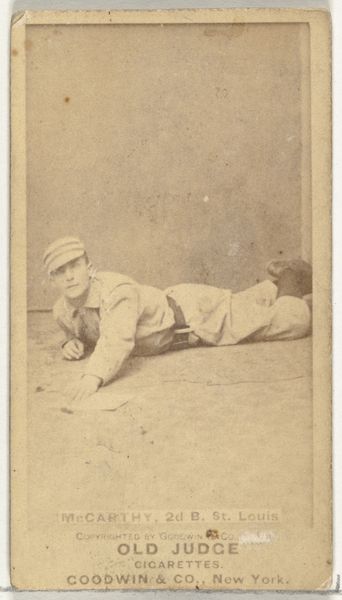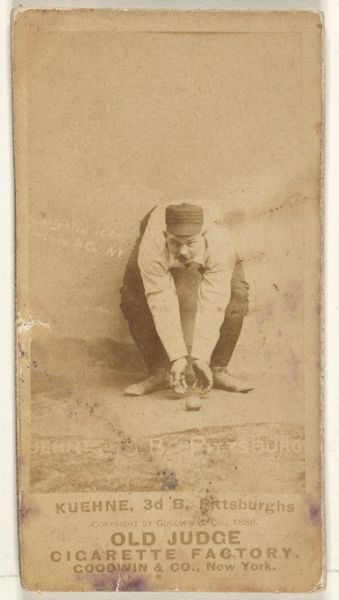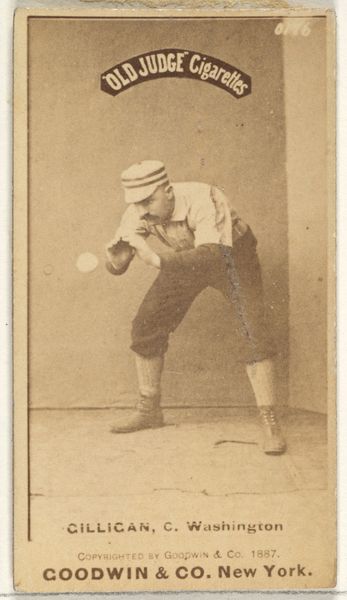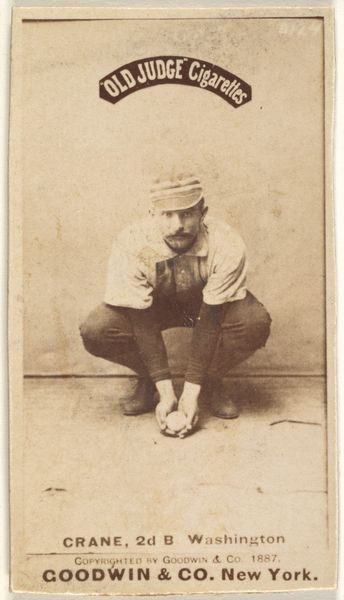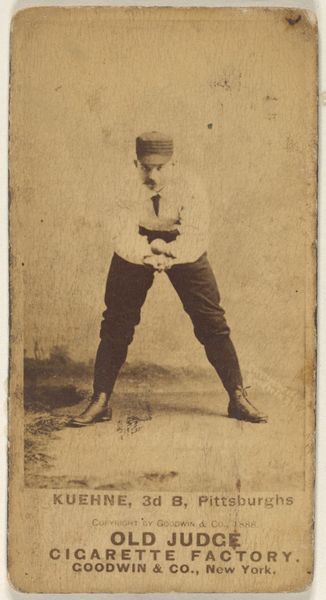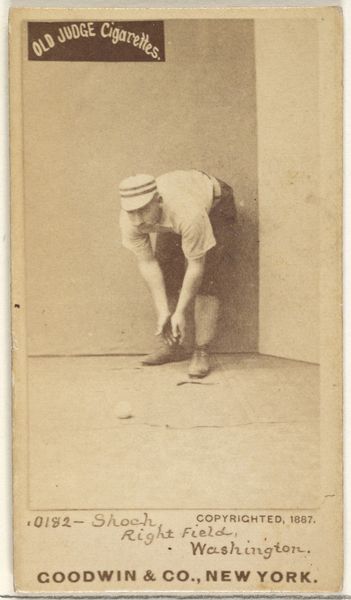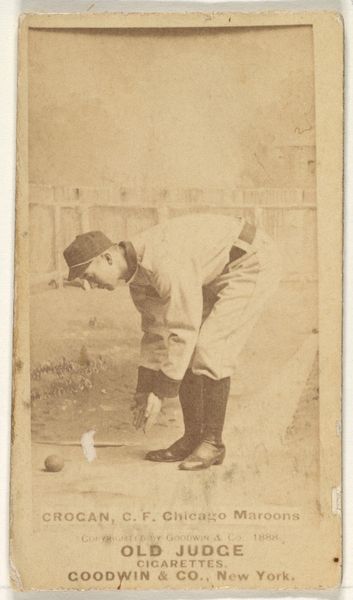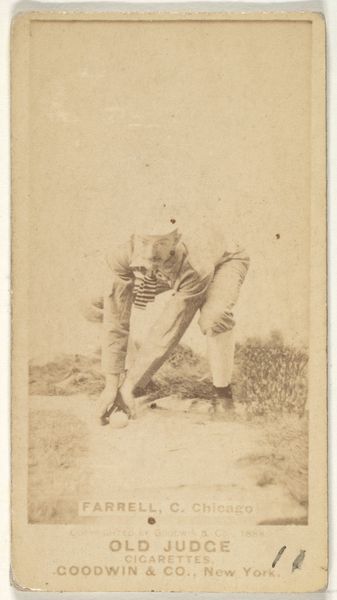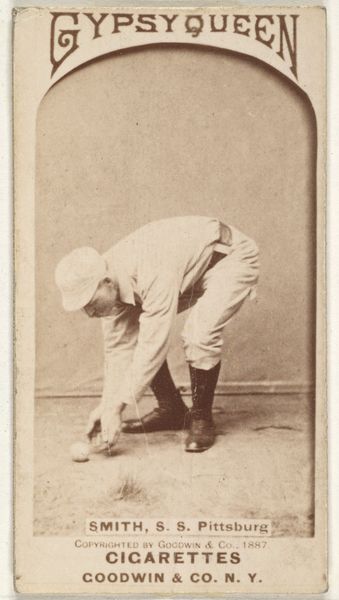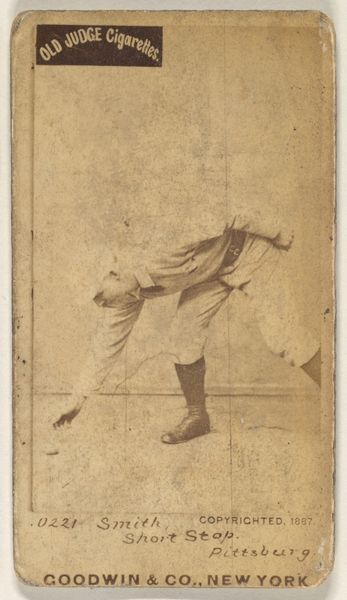
James B. "Jim" Donnelly, 3rd Base, Washington Nationals, from the Old Judge series (N172) for Old Judge Cigarettes 1887
0:00
0:00
print, photography, albumen-print
#
portrait
# print
#
impressionism
#
photography
#
men
#
genre-painting
#
albumen-print
#
realism
Dimensions: sheet: 2 11/16 x 1 3/8 in. (6.9 x 3.5 cm)
Copyright: Public Domain
Curator: Let's turn our attention to this albumen print from 1887, titled "James B. 'Jim' Donnelly, 3rd Base, Washington Nationals, from the Old Judge series (N172) for Old Judge Cigarettes," created by Goodwin & Company. It's a fascinating artifact. Editor: My immediate response is that this feels incredibly posed, almost stilted. It has a certain weightiness to it, even though it's a relatively small print. The subdued sepia tones certainly contribute to that serious atmosphere. Curator: Yes, the albumen print process lends itself to that tonality. It's interesting to observe how Goodwin & Company utilizes composition here. Donnelly is centrally located, nearly symmetrical. There is almost a stillness conveyed in his body language and position, which is disrupted only by his left hand—that creates subtle asymmetry. The square composition contains the depicted baseball diamond at its bottom as well, grounding him firmly within this framed instance. Editor: I find myself considering the context of celebrity and commodification in this image. We have this athlete, Jim Donnelly, whose image is being used to sell cigarettes. What was the prevailing sentiment at the time, and what message did that send about him and professional athletes? Also, why are cigarettes attached to images of athletes who ostensibly train and care for their bodies? Curator: Excellent points. Examining the social and commercial forces at play is essential. However, I also urge a closer analysis of its pictorial conventions. Consider how this formal presentation interacts with prevailing social ideologies, and vice versa. Does the formal stillness reflect particular cultural norms? Editor: Definitely. His positioning is no doubt culturally coded and carefully staged by the photographers at Goodwin, and designed to instill the kind of brand confidence so heavily peddled in advertisements then and even today. Think about who was included, who was excluded, who the advertisement was marketing towards, and even the name—Old Judge—invoking tradition, and likely certain race and class-based respectability markers. Curator: Precisely. This interdisciplinary approach—connecting form and context—offers the richest readings, demonstrating how an albumen print made for commercial consumption also reveals larger patterns of societal behavior. Editor: Ultimately, what we have here is both a carefully composed formal portrait as well as a document rife with cultural information about labor, leisure, and consumer culture at the close of the 19th century. It asks us to see how form can reveal meaning in subtle ways.
Comments
No comments
Be the first to comment and join the conversation on the ultimate creative platform.
